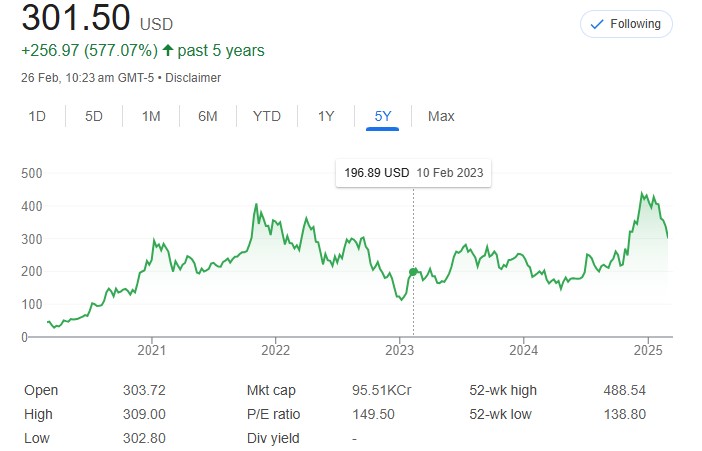Summary: Major Indices Slip from Highs on Earnings Drag
The US stock market today saw the major indices—Dow Jones Industrial Average, S&P 500, and Nasdaq Composite—snap their multi-day winning streaks. The Dow fell about 204 points (0.5%) to close near 44,633, the S&P 500 edged down 0.3%, and the Nasdaq slipped 0.4% as the rally cooled. Despite a buoyant start to the week driven by robust tech earnings and optimism around global trade talks, a wave of disappointing results from blue-chip stocks weighed on sentiment. Investors kept a cautious eye on the Federal Reserve’s policy meeting and closely watched macro data, while market volatility increased as traders repositioned risk following strong market gains in July. Notably, weakness in healthcare and industrials offset some sturdy pockets in tech and energy, leading to a broadly mixed close.
For a detailed read, sector‑wise breakup, and deep dive, continue below.
In-depth Analysis: Sector-by-Sector Winners and Losers
1. Information Technology
The tech sector, a key US market driver, showed resilience despite some profit booking after previous rallies. Big names like Apple and Microsoft held steady, while Cadence Design Systems surged nearly 10% on a strong earnings beat and raised guidance. However, profit-taking and broad market uncertainty kept gains in check as traders awaited results from Amazon and Meta later this week. The overall optimism for AI-driven growth kept tech sentiment buoyant.
2. Healthcare
Healthcare was the day’s biggest laggard. UnitedHealth Group shares dropped over 5% after disappointing quarterly results and a trimmed outlook, contributing to a 0.4% decline in the S&P healthcare index. Rising medical costs and regulatory uncertainty spooked investors, negating gains in biotech where Sarepta Therapeutics jumped 36% after FDA approval for its gene therapy. Defensive sectors like healthcare saw less appeal as growth and risk appetite increased elsewhere.
3. Consumer Discretionary
Consumer discretionary stocks underperformed as well, pressured by cautious outlooks from major retailers and soft guidance from Whirlpool and UPS. UPS shares fell over 10% due to lower package volumes and lackluster earnings, reinforcing demand concerns in the retail supply chain. However, e-commerce and travel names generally outperformed, reflecting mixed consumer trends.
4. Financials
Financials traded sideways. Big banks and insurers struggled for traction after reporting solid capital ratios but facing margin headwinds from a steady rate environment. Insurer Brown & Brown swooned over 10% despite better-than-expected earnings due to margin concerns. The prospect of the Federal Reserve keeping rates unchanged kept a lid on enthusiasm for the sector.
5. Industrials
The industrials sector lagged as mixed earnings from bellwethers Boeing (down 3.7%) and Procter & Gamble (flat) tempered sentiment. Ongoing global trade jitters, even amid positive rhetoric out of US-EU and US-Japan tariff negotiations, created choppy performance among larger industrial names. This unevenness carried over to logistics, where companies like UPS weighed on the overall sector.
6. Energy
Energy was a rare bright spot. Despite recent price swings, the sector gained over 1% thanks to firming oil prices and better-than-expected quarterly results from mid- and upstream firms. Ongoing global recovery hopes and geopolitical tensions provided tailwinds. This sector bucked the broad profit-taking trend evident in other risk assets.
7. Consumer Staples
Consumer staples were little changed. Procter & Gamble posted earnings in line with expectations but offered a cautious outlook on organic growth, reflecting ongoing macro headwinds for consumer brands. Investors rotated out of staples toward more cyclical names, with traders eyeing upcoming quarterly reports from key beverage and food producers later in the week.
8. Real Estate
Real estate trailed the pack as Treasury yields remained steady and REITs struggled to attract fresh inflows. The sector declined by about 1.7% following profit-taking in property names and subdued investor appetite ahead of inflation and jobs data later in the week.
9. Utilities
Utilities also slipped, falling over 1% as traders shifted away from defensive sectors. With the Federal Reserve expected to keep rates steady, low-volatility utility stocks were less attractive amid resurgence in cyclical and growth names.
10. Materials
Materials fell by 1.5%. Commodity players reacted to mixed economic signals and tariff policy speculation, with traders wary ahead of the GDP release. Despite a global trade truce, uncertainty about demand from China and domestic recovery hit basic material stocks.
Top Gainers & Laggards Across Sectors
- Sarepta Therapeutics (+36%): Rocketed after FDA nod for its gene therapy product in biotech.
- SoFi Technologies (+11%): Jumped on strong revenue growth and bullish guidance.
- Cadence Design Systems (+10%): Outperformed on earnings and optimistic forecast.
- Carrier Global (-11%): Led S&P losers on reduced full-year growth outlook.
- UPS (-10%): Disappointed with soft volumes and ambiguous forward guidance.
- UnitedHealth (-5%): Weighed heavily on the health sector after missed earnings.
Market Sentiment, Trading Patterns, and Fed Watch
Today’s market reflected “cautious optimism”—traders moved quickly after strong July gains, rotating between growth, defensives, and cyclicals as new macro inputs arrived. Downbeat earnings from several blue chips led to profit-taking and heightened volatility. Investors are now laser-focused on Wednesday’s Fed meeting: consensus expects no rate change, but forward guidance may swing sentiment. Traders balanced hopes for an eventual dovish tilt with risk of continued hawkish language, especially as inflation and jobs data loom.
Outlook & Upcoming Events
- Federal Reserve Meeting (July 30-31, 2025): Market consensus is for rates to remain steady. Chair Powell’s comments will be dissected for clues on the interest rate path and inflation outlook.
- GDP Release: Second quarter GDP is due, with forecasts calling for a sharp rebound to around 2.3% annualized growth after Q1’s slowdown.
- PCE Inflation Data (Aug 1): Market’s preferred inflation gauge will shape rate expectations and risk positioning for August.
- Corporate Earnings: Tech heavyweights Amazon, Meta, and Apple report this week, which could set the tone for market leadership into August.
- Labor Data: Thursday brings initial jobless claims and employment cost index figures—both could sway sentiment on US economic resilience.
- Trade Talks: Fresh negotiations with China and tariff deadlines may introduce volatility in industrials and multinational stocks.
Investors can expect more two-way action as the focus shifts from earnings-momentum to macro and policy drivers. A dovish Fed surprise or blockbuster big tech numbers could reignite July’s rally, but lingering inflation or hawkish central bank commentary may provoke more defensive rotation heading into late summer.
Final Thoughts
While the US stock market today drew a breath after a record-setting July, underlying resilience in tech and energy illustrated the ongoing appeal of high-quality growth. Earnings volatility will remain center stage, especially as traders digest critical Fed signals and macro releases. For active investors and market-watchers, flexibility and diversification could be vital as the rally pauses and new catalysts emerge.



